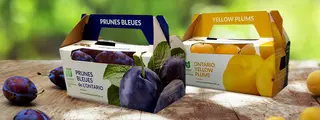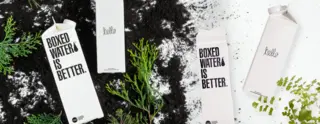
When you’re at the grocery store, a product’s packaging can make all the difference between putting it in your cart or placing it back on the shelf. Packaging is really important, and not just because it keeps your food safe—it can also subtly affect your purchasing decisions. Here are eight facts you may not have known about food packaging.
1. Paper food packaging has stood the test of time
Paper packaging for food has existed in China since as early as the 2nd century BCE. Back then, food was wrapped in thin, treated sheets of mulberry bark; the idea later spread around the world. Then, in 1879, a happy accident changed history: A worker at a paper bag manufacturing facility in Brooklyn, New York, set the machine to the wrong settings and accidentally cut through small bags rather than creasing them. The owner of the factory realized that by adjusting the settings on the machine, he could cut and crease at in a single step. This paved the way for mass-produced paperboard boxes, which would revolutionize the way that cereal, crackers, and other food items could be packaged to maintain freshness.
2. The agriculture industry uses most of America's cardboard boxes.
You probably associate cardboard boxes with moving day and online shopping, not the grocery store. But in the U.S., almost half of the corrugated boxes (the official term for what we think of as cardboard shipping boxes) made each year are used to get food from farms to your local grocery stores.
3. Some materials are less germy than others.
Research has shown that the process used to manufacture cardboard boxes can ward off germs. To make cardboard, layers of paper are shaped and bonded at temperatures of up to 200°F—hotter than most pathogens like E. coli and Salmonella can withstand. This means that cardboard boxes are a particularly safe way to package food, since they’re sure to come out of the manufacturing process sanitized, even if they’re made from recycled material. And because cardboard boxes are only used to ship food once before being broken down and recycled, they don’t spread bacteria like a reusable container made of another material might.
4. Packaging affects how long food stays fresh.
A 2016 study conducted in Spain found that storing fruit in corrugated cardboard trays increased its shelf life by reducing cross-contamination. When both corrugated and plastic trays of peaches were deliberately contaminated with bacteria, the researchers found that fewer microorganisms transferred from the cardboard packaging to the peaches. The researchers also found that fruit stayed fresh for 48 to 72 hours longer when stored in cardboard trays.
5. Packaging influences how we feel about food.
Studies have found that design elements like color, imagery, and certification logos can influence how we think about a particular packaged food. For instance, one 2015 research paper found that the more text that appeared on packaging for items like coffee or baby food, the healthier people perceived the product. In the same study, participants also found products in green packaging to be healthier. And people don’t particularly want to see the product inside the package before they buy—participants preferred seeing images of the product rather than a transparent window into the packaging.
6. Paper packaging can make a product feel fancy.
Paper packaging comes off as more than just eco-friendly. In one national poll, 63 percent of Americans surveyed said they thought paper and cardboard packaging makes products seem high quality, compared to other kinds of packaging. Even more—69 percent—think that paper or cardboard packaging makes a product seem more authentic. Next time you’re at the grocery store, take notice—you probably feel more drawn to the cardboard box.
7. And trustworthy.
That same poll found that when it comes to food, paper and cardboard packaging just feels safer than other materials to many people. Two-thirds of respondents noted that paper packaging allows them to see that their food hadn’t been tampered with or damaged during shipping, giving them better peace of mind.
8. And sweet.
Another study found that when consumers were faced with cereal boxes made of smooth cardboard, rough cardboard, or clear plastic, they associated the cardboard products with words like “sweet,” “warm,” and “comfortable,” while they were more likely to label the bags of cereal as “cold.” Participants tended to say they would be more likely to buy cereal in the smooth cardboard box compared to the other packages.
It’s amazing that paper packaging can affect everything from the safety of our food to how we feel about it.



